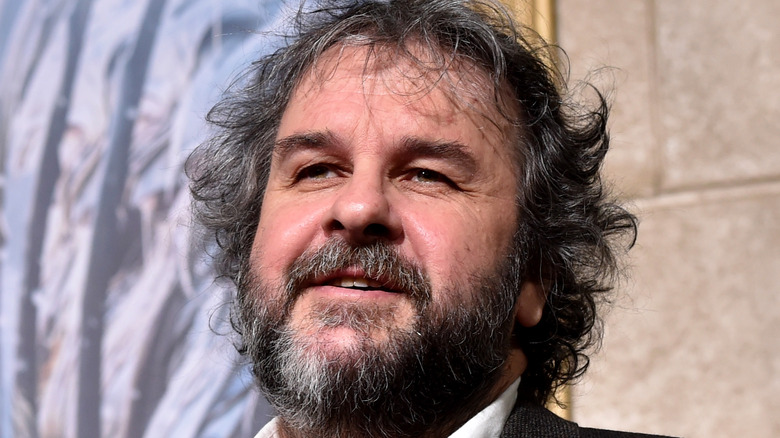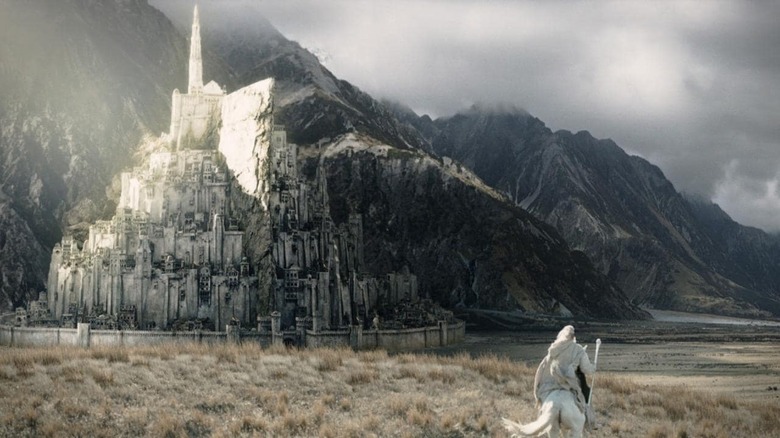The Mind-Blowing Way Peter Jackson Filmed The Iconic Lord Of The Rings Castles
Peter Jackson's "Lord of the Rings" trilogy continues to hold up as one of the best fantasy film series of all time — due in no small part to the series' groundbreaking use of special effects. Bringing Middle-earth to life in a believable way was perhaps one of the most daunting tasks in the history of cinema. The vast landscapes, epic large-scale battles, and dozens of fantastical creatures and monsters made it seem like the story was nearly impossible to film, but Jackson and his VFX team did just that.
Not only did they succeed in breathing life into the pages of J. R. R. Tolkien's acclaimed fantasy saga, but they did so in a way that the world of Middle-earth seems just as fresh and engaging now as it first did when "The Fellowship of the Ring" launched back in 2001. One major component of why the films continue to hold up is Jackson's insistence on using a combination of practical and digital effects. While that might sound easy enough on paper, Jackson found out pretty early on that there were some practical effects that took much longer (and cost a lot more money) than others.
Peter Jackson used models he called "bigatures"
Specifically, Peter Jackson insisted that in order to make the castles and cities of Middle-earth feel real, the production would require miniatures. The use of miniatures in film is nothing new, but where Jackson strayed from the path of previous filmmakers was his insistence that they scaled up the miniatures to what the crew called "bigatures." The bigatures were exactly what they sound like — scale models so big that they often dwarfed the crew members working on them. Whether it was the castle of Helm's Deep or the fortress of Minas Morgul, the gigantic size of the models allowed the filmmakers to pack so much detail into the castles that they look better on screen than most modern CGI effects.
There's no better example of the bigatures than the model of Minas Tirith. The finished model was 7 meters tall (about 22 feet), and 6.5 meters in diameter (21 feet), featuring over 1000 individual houses across the entire structure (via Mix Media). In addition, the crew constructed scale models of specific portions of the city and made them even larger, still smaller than real life, but so big that the crew could walk through the city streets and not reach the tallest of the city's battlements. The painstaking effort that went into creating the bigatures was almost like building the castles for real, and that attention to detail is a big part of why "Lord of the Rings" look so good, even to this day.

